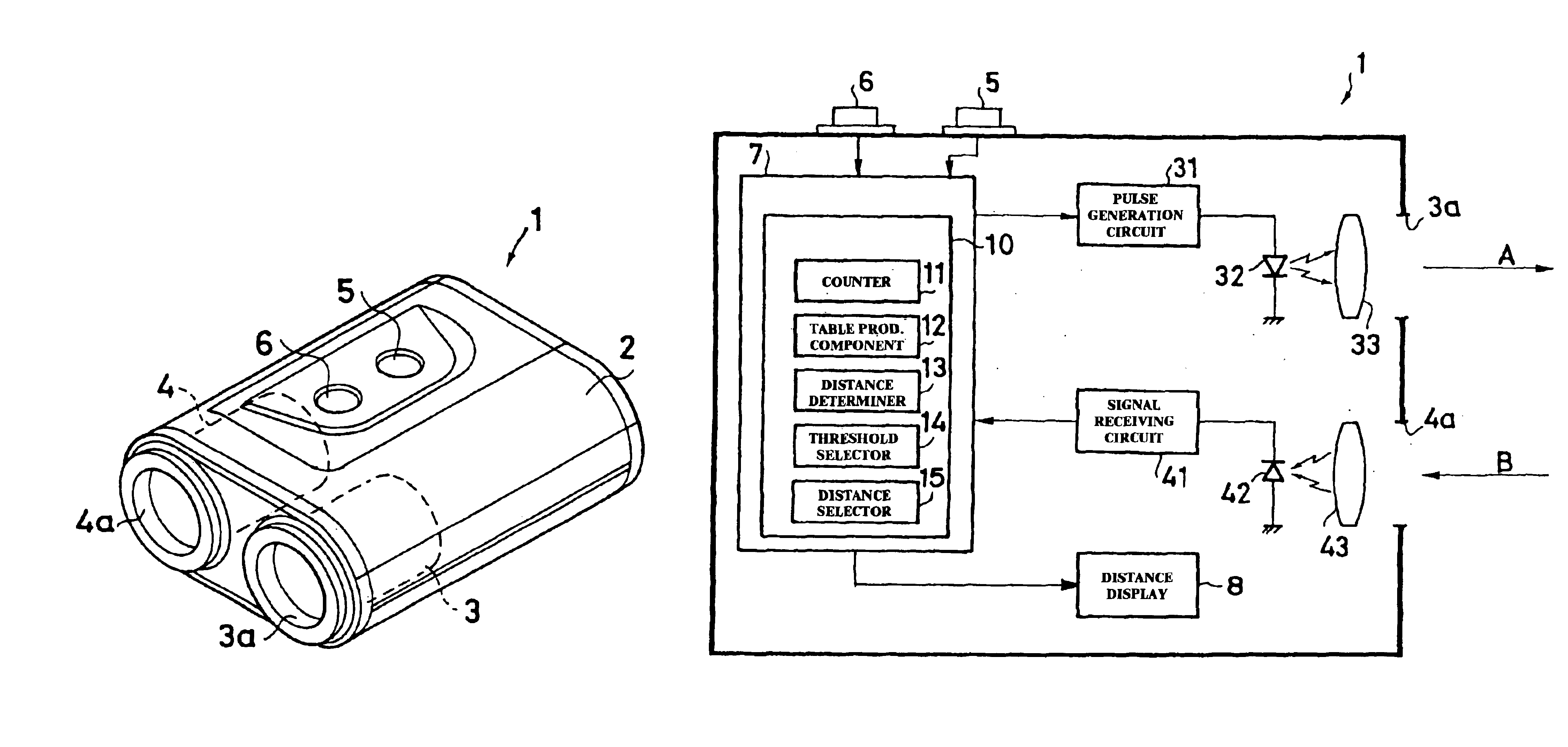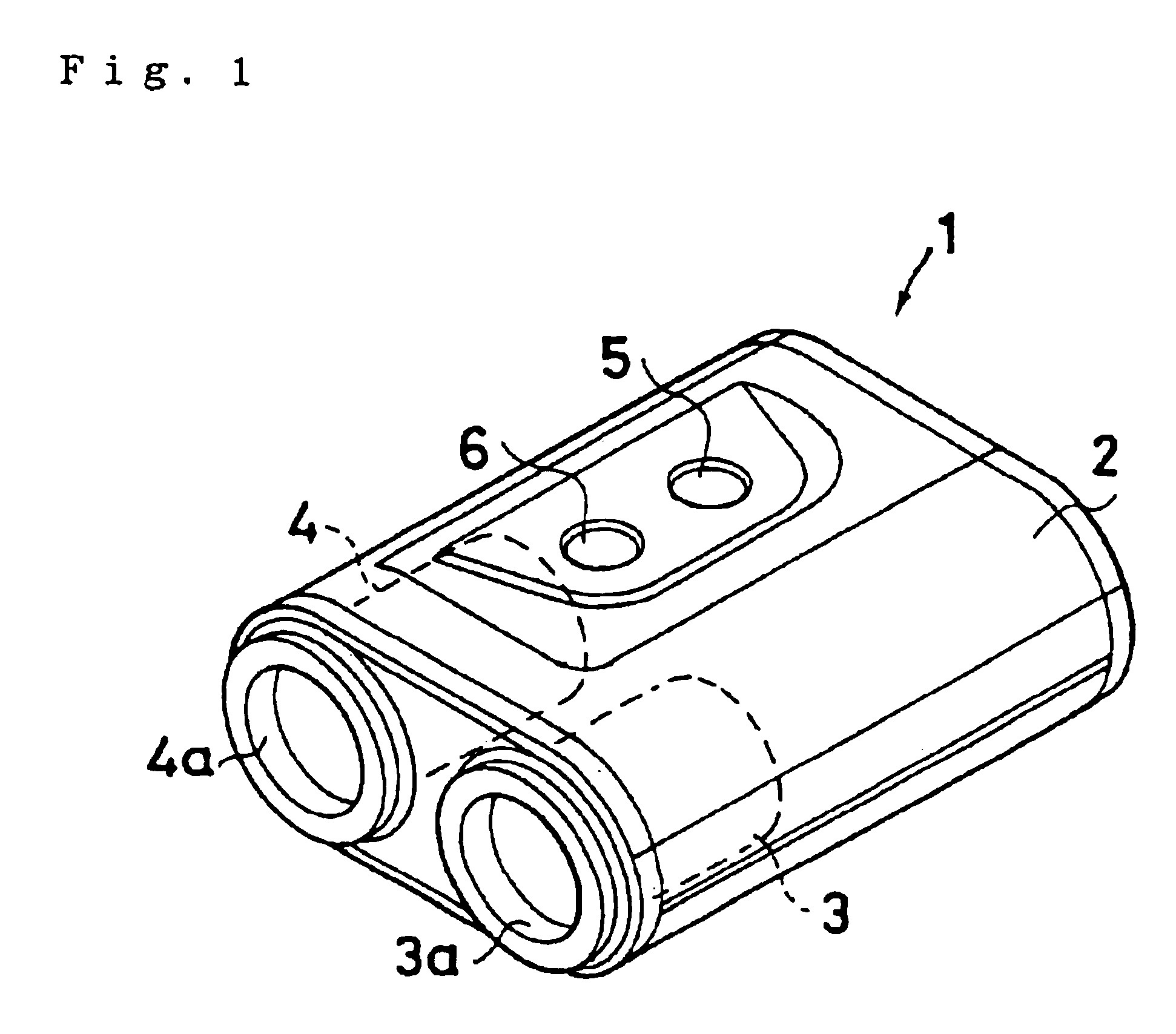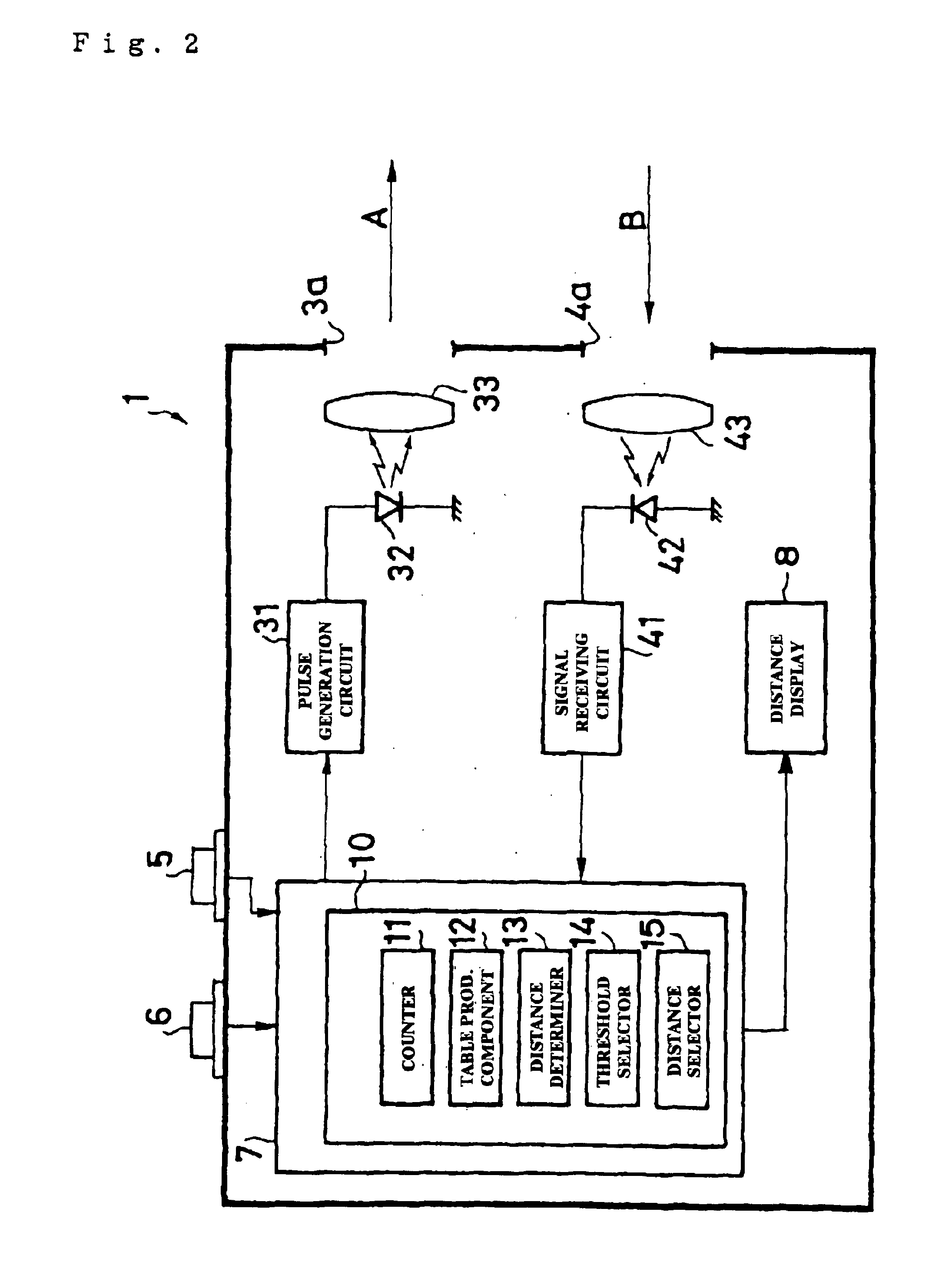However, when an object of measurement is thus irradiated with
pulsed laser light and the light reflected back from the object of measurement is then received, what is received is not only the reflected
laser light, but also natural light and so forth, which becomes
noise light.
This
noise light is difficult to distinguish from the light reflected back from the object of measurement, so the problem is that it is difficult to measure distances accurately.
Unfortunately, however, the following problems are encountered with this ranging method.
The first problem is as follows: Specifically, when the object of measurement is large and all of the
laser light emitted from the ranging apparatus irradiates the object of measurement, it seems sufficient to calculate the distance corresponding to the point showing a high count in the frequency distribution table, but when the object of measurement is relatively small and the laser light also irradiates the area surrounding the object of measurement, so that reflected light from surrounding objects also comes back, or when there are a plurality of objects of measurement at varying distances within the laser
light irradiation field of the ranging apparatus, so that reflected light comes back from each of the objects of measurement, there are a plurality of points showing high counts in the frequency distribution table.
In cases such as these, a plurality of distances are calculated, but the issues of how to
handle the plurality of distances and how to display them greatly affect the flexibility, functionality, and so forth of the ranging apparatus.
In a case such as this, there is the danger that the count corresponding to the distance of the window glass will increase in the frequency distribution table, so that the distance corresponding to the position of the window glass will be mistakenly determined as the distance to the object of measurement.
Similarly, if tree branches or the like are in front of the object, the reflected light from the tree branches is received, and these branches may end up being mistakenly judged to be the object of measurement.
The third problem is as follows: Namely, when a distance is measured by looking at the object of measurement through window glass, or when a distance is measured by looking at the object of measurement through tree branches, the reflected light from the window glass, tree branches, or the like, located in front of the object of measurement is also constantly received.
Consequently, there is the danger that the frequency corresponding to the distance of these obstacles will be high in the frequency distribution table, so that the distance thereof will be determined as the distance to the object of measurement, the result being that the measured distance to the object of measurement is inaccurate.
Furthermore, the position at which the frequency in the frequency distribution table increases can be affected by the shaking of the user's hands when the ranging apparatus is held in the hands during measurement, atmospheric fluctuations in the measurement environment, and other such effects, which is a problem in that the measured distance is inconsistent, or frequencies with an extremely
large peak appearing to be
noise may occur in the frequency distribution table, and the direct use of these frequencies results in incorrect
distance measurement.
Also, when the distance to an object of measurement that spreads out longitudinally is measured, such as when the distance to a building is measured by looking obliquely at the walls of the building, it is difficult to determine the distance if the frequency increases over a wide range of distances.
Consequently, it is extremely difficult to determine the level of frequency for the distance in the frequency distribution table to be taken as the position of the object of measurement.
In this case, if the preset determination threshold is too high, there is a concern that no frequency over this threshold will be found, and the distance to the object of measurement cannot be specified, but on the other hand, if the determination threshold is too low, many frequencies over this threshold may be found, making it impossible to specify which of these is the distance to the object of measurement.
Furthermore, in a
laser ranging apparatus such as this, the intensity of the reflected light weakens as the distance to the object of measurement increases, so high sensitivity is required to detect faint light, and an extremely short time must also be detected accurately.
However, because of their high sensitivity, avalanche photodiodes also have the drawback of low stability.
When this happens, if the avalanche photodiodes are used with a
laser ranging apparatus to detect reflected light from an object of measurement, the output from the
detector changes independently of the amount of reflected light, producing an error in the measurement timing for received reflected light, and in extreme cases measurement may not even be possible.
In the former case, the cost of the apparatus increased by the cost of the device used to keep the temperature constant, and in the latter case, because there was a limit to the amount of light that could be detected, the measurable distance became shorter when the avalanche photodiodes were used with a
laser ranging apparatus.
 Login to View More
Login to View More  Login to View More
Login to View More 


